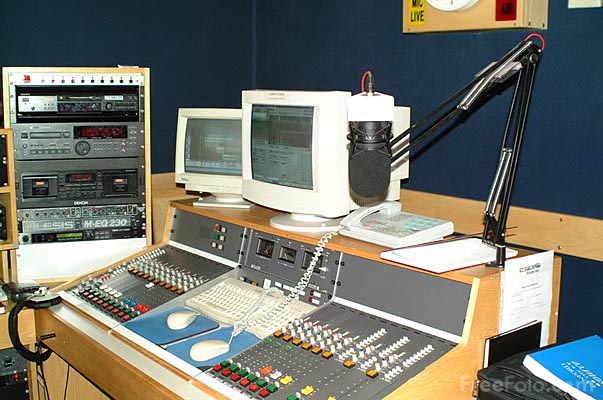Podcasts and the Radio in Today’s Media Landscape
By Jourdynn Cooper
Podcasts and college radio stations bring us news from a place of freedom in different ways and forms, with the intent to bring new ideas to the table. Podcasts allow for a new level of freedom of speech that the radio simply doesn’t allow. Radio stations are observed by different entities to ensure that what is being broadcasted is acceptable.

Photo by: Ian Britton
Podcasts can be used as a part of the resistance of free-speech movements as can be seen in Zimbabwe by Christopher Farai Charamba and Tawanda Henry Biti and in Vietnam with the Loa.fm podcast (Frary, 2017). In countries with restrictions on freedom of speech, it is easier to spread information through a podcast as opposed to a publicly played radio station. Podcasts can be easily distributed through various websites, apps, and other outlets and through this distribution they can express themselves freely without inference from the government, allowing for the podcasters to discuss challenging stories regardless of their content (Frary, 2017). In the beginning, podcasts were difficult to reach the masses, but once the word spread it became easily accessible making podcasts much more popular today. Podcasts can be put on at any time by the listener, stopping and starting as they please.
Before podcasts were popular, college radio was a place for freedom of speech and experiments (Lozano, 2017). College radio was at its peak in the 1980s and ’90s, but their influence has greatly diminished since then due to the rise of other outlets such as blogging, and file-sharing, and the rise of the internet (Lozano, 2017). Even though their importance in our culture is less than what It is in the past, college radio still does have some perks. College radio is able to reach people in its own area, bringing local ideas to the airwaves, made and listened to by local people, as 91% of Americans still listen to the radio (Lozano, 2017).
Listeners must be wary about the information provided by podcasts, while they are given the freedom to discuss what they wish, this could lead to false statements being spread as fact. In both radio and podcasts, the listeners have to be attentive to what they are hearing or the broadcast means nothing. While podcasts have become more accessible, one is much more likely to be in a place with a radio, the store, a car, a restaurant, etc. making this medium more accessible than the podcasts.

Photo by: Silvio Tanaka
Podcasts naturally seem like an extension of the radio; allowing for more freedom and accessibility by the listeners (Berry, 2016). But podcasts are not being recorded for the radio, they are being recorded to be listened to by people around the world, with no limitations of the content or the way it is listened too. Many of the podcasts form out of being able to ‘do radio’ on their own terms, leading it to seem as though the need for radio is diminishing (Berry, 2016).
Both radio and podcasts allow for a level of freedom of one person to express their ideas to others. Both are important for our society, but one is being much more accessible and popular in our society today.
Sources:
Berry, Richard. “Podcasting: Considering the Evolution of the Medium and Its Association with the Word ‘Radio.’” The Radio Journal. 14.1 (2016): Web.
Frary, Mark. “Power to the Podcast.” Indexoncensorship.org (2017): Web.
Lozano, Kevin. “Does College Radio Even Matter Anymore?” Pitchfork (2017). Web.
